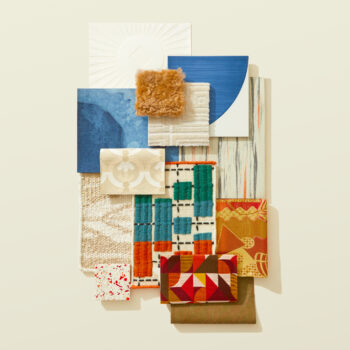
In a world where convenience often trumps experience, the grab-and-go restaurant is typically seen as utilitarian, fast-paced, and designed primarily for efficiency. However, now more than ever, diners crave an experience that marries convenience with a touch of luxury. A grab-and-go restaurant with a high-end feel requires a thoughtful approach to design elements—from flooring to furniture to wallcoverings—aimed at creating an environment that is not only functional but also immersive and inviting.
The choice of flooring materials establishes the restaurant’s ambiance. The flooring must strike a balance between durability and aesthetic appeal. Porcelain tile with a high-gloss finish can provide a sleek and sophisticated look, reflecting light to make the space feel larger and more open. Natural stone tiles, such as marble or granite, exude luxury and can be used in specific areas to create a sense of destination within the restaurant. For a more modern and edgy feel, polished concrete floors with embedded aggregates can add texture and interest. In areas where slip resistance is a concern, such as near beverage stations or the entrance, textured tiles or engineered hardwood with a matte finish can offer both safety and style.
In grab-and-go restaurants, furniture is designed to accommodate quick turnover while still providing comfort and visual interest. Seating options can include upholstered bar stools and benches in rich, textured fabrics that are easy to clean but add a touch of elegance. Tables with metallic bases and stone or quartz tops provide a sophisticated surface that is durable and easy to maintain.
The walls offer a canvas for creative expression and can significantly influence the overall mood of the space. For a high-end experience, consider textured wallcoverings such as grasscloth or woven textiles that add depth and interest. These materials can be complemented by accent walls featuring large-format murals or digital art displays that can be changed seasonally to keep the environment fresh and engaging. Adding in the use of wall panels in rich materials like walnut wood or brushed brass, can serve as a backdrop for minimalist décor, allowing the quality of the materials to speak for themselves. Backlit feature walls with frosted glass or translucent materials can create a sense of drama and elegance, especially in dimly lit evening settings.
In a grab-and-go restaurant, traffic flow is critical. The layout should facilitate easy movement and minimize congestion, even during peak hours. Strategic placement of service counters, display cases, and self-service stations can help guide customers through the space efficiently. Using floor patterns or lighting cues can subtly direct the flow of traffic without the need for signage. Incorporate a clear path from the entrance to the checkout area and then to the exit, ensuring a smooth experience for customers. Providing multiple egress points, such as sliding glass doors or wide doorways, can also enhance the overall flow and make the space feel more open and inviting.
The grab-and-go restaurant concept is evolving to meet the demands of a discerning clientele who seek both convenience and a high-end experience. By focusing on the details, designers can create a space that is not only efficient but also immersive and luxurious. As the lines between convenience and experience continue to blur, the grab-and-go restaurant of the future will not just be a place to pick up a meal but a destination in itself, offering a unique and memorable experience that resonates with modern diners.
Dive deeper into how to incorporate tile and stone into hospitality design here.







